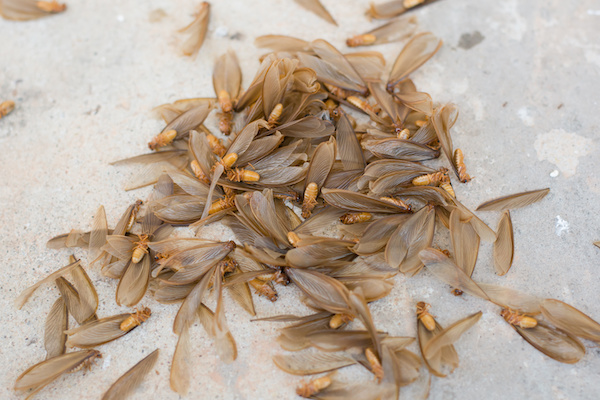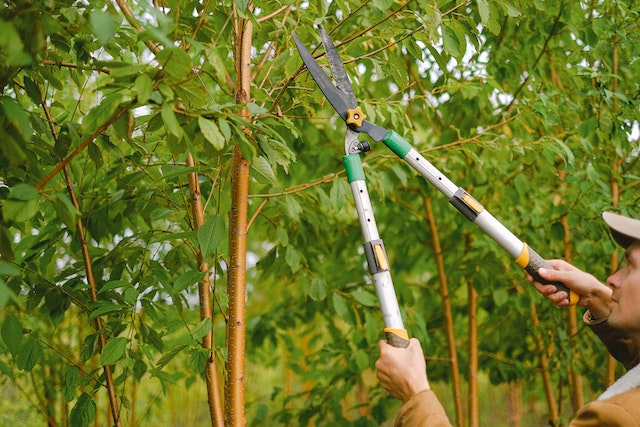
Termites swarming might seem strange at first, but it’s a natural occurrence worth exploring. These inconspicuous insects, often associated with structural damage, engage in a coordinated aerial display during mating season.
Through a closer look at termite swarming, we aim to uncover why they do it, understand its ecological importance, and see how it affects pest management practices.
What is Termite Swarming?
Swarming occurs when certain termite species release winged reproductive termites, often referred to as “swarmers” or “alates,” into the air. This significant phase in their life cycle typically occurs during the warm and humid conditions of spring or early summer in our Raleigh area.
These swarms are a direct response to environmental cues, usually following periods of rainfall and warm temperatures that are quite common here. These conditions create the perfect setting for the emergence of winged termites in significant numbers, making it important for Raleigh residents to be aware of and prepared for termite activity during these seasons.
This swarming process is carefully orchestrated by the termite colony. As the colony matures, it produces specific termites equipped with wings. These winged termites are designed to venture out of the nest, seek potential mates from other colonies, and initiate the formation of new colonies.
For homeowners, termite swarming is a signal that there may be termite activity in or around their property. While swarmers themselves do not pose direct threats, their presence suggests the existence of a mature termite colony nearby.
This colony could be situated within the property’s structure, vicinity, or both. Consequently, homeowners should take proactive measures to avert potential infestations and subsequent property damage.
Spotting termites swarming is relatively straightforward. They are occasionally mistaken for flying ants due to their similar appearance. Nevertheless, key distinctions exist.
Termites have straight antennae, a uniform body shape, and two pairs of wings that are equal in size. In contrast, ants have bent antennae, distinct body segments, and wings of varying lengths.
How to Protect Your Home from Termites Swarming
Termite swarming can be a concerning event for Raleigh homeowners, but there are proactive steps you can take to shield your home from these pests and effectively manage the situation if swarming occurs.

Maintaining a termite-resistant environment requires consistent effort. Start by ensuring your property doesn’t attract these destructive insects. Keep in mind the following strategies:
- Regular Maintenance: Conduct routine inspections and upkeep for your home’s exterior. Look for signs of wood decay, cracks, and gaps. Promptly address these issues to eliminate potential entry points for termites.
- Moisture Management: Termites thrive in dampness. To discourage them, maintain proper ventilation throughout your property, promptly fix leaks, and ensure effective drainage around your home’s foundation.
- Landscaping Practices: Trim bushes, shrubs, and tree branches to create a gap between plant life and your home. This reduces the risk of termites using plants as pathways to access your property.
- Wood Storage: Keep firewood, lumber, and wood-based materials away from your home. Elevate them above ground level and maintain a distance from your property’s perimeter.
- Wood-to-Soil Contact: Prevent direct contact between soil and wooden parts of your home. Termites can easily move from soil to wood. Establish a barrier using concrete or metal to block this contact.
Dealing with Termites Swarming
Encountering termite swarming within your home can be quite annoying, but the situation is manageable with effective steps and a measured approach.
First and foremost, it’s essential to stay calm if you spot a termite swarm indoors. While the sight might be unsettling, remember that swarmers themselves are not the primary threat. Instead, their presence indicates the proximity of a mature termite colony in the vicinity.
Should you come across termites swarming, consider capturing a few swarmers in a container. This step serves a dual purpose: it allows for the identification of the termite species involved, and it provides valuable material for pest control professionals to assess the situation accurately.
The next step is to contact professional pest control services without delay. Trained technicians are equipped with the expertise to navigate such scenarios. Upon arrival, they will conduct a thorough inspection of your property to evaluate existing termite activity, identify potential entry points, and gauge the overall extent of the infestation.
Following the inspection, pest control experts will recommend appropriate treatment methods based on their findings. These methods could range from localized treatments to barrier applications or even ongoing monitoring strategies aimed at preventing future infestations.
Termite Swarming: The Bottom Line
Termites swarming is a serious matter for homeowners to consider, as it’s a clear signal of potential termite activity nearby. While the winged termites themselves might not be immediate threats, their presence indicates a mature termite colony in the vicinity. Neglecting this warning could lead to eventual structural damage, emphasizing the need for homeowners to take swift action.
When dealing with termite swarming, involving a reliable pest control agency is a smart move. These experts have the necessary knowledge to correctly identify the termite species and assess how widespread the infestation might be.
For expert guidance on managing termites swarming in North Carolina, contact us at Innovative Pest Solutions. Our dedicated team is committed to protecting your home and investment from the threats posed by these persistent pests. Contact us today to take the first step toward comprehensive termite control in Raleigh!





